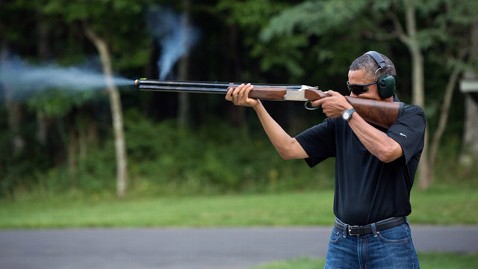ANKARA (Reuters) - A far-leftist suicide bomber killed a Turkish security guard at the U.S. embassy in Ankara on Friday, officials said, blowing open an entrance and sending debris flying through the air.
The attacker detonated explosives strapped to his body after entering an embassy gatehouse. The blast could be heard a mile away. A lower leg and other human remains lay on the street.
Prime Minister Tayyip Erdogan said the bomber was a member of the Revolutionary People's Liberation Party-Front (DHKP-C), a far-left group which is virulently anti-U.S. and anti-NATO and is listed as a terrorist organization by Washington.
The White House said the suicide attack was an "act of terror" but that the motivation was unclear. U.S. officials said the DHKP-C were the main suspects but did not exclude other possibilities.
Islamist radicals, extreme left-wing groups, ultra-nationalists and Kurdish militants have all carried out attacks in Turkey in the past. There was no claim of responsibility.
"The suicide bomber was ripped apart and one or two citizens from the special security team passed away," said Prime Minister Tayyip Erdogan.
"This event shows that we need to fight together everywhere in the world against these terrorist elements," he said.
Turkish media reports identified the bomber as DHKP-C member Ecevit Sanli, who was involved in attacks on a police station and a military staff college in Istanbul in 1997.
KEY ALLY
Turkey is a key U.S. ally in the Middle East with common interests ranging from energy security to counter-terrorism and has been one of the leading advocates of foreign intervention to end the conflict in neighboring Syria.
Around 400 U.S. soldiers have arrived in Turkey over the past few weeks to operate Patriot anti-missile batteries meant to defend against any spillover of Syria's civil war, part of a NATO deployment due to be fully operational in the coming days.
The DHKP-C was responsible for the assassination of two U.S. military contractors in the early 1990s in protest against the first Gulf War and launched rockets at the U.S. consulate in Istanbul in 1992, according to the U.S. State Department.
Deemed a terrorist organization by both the United States and Turkey, the DHKP-C has been blamed for suicide attacks in the past, including one in 2001 that killed two police officers and a tourist in Istanbul's central Taksim Square.
The group, formed in 1978, has carried out a series of deadly attacks on police stations in the last six months.
The attack may have come in retaliation for an operation against the DHKP-C last month in which Turkish police detained 85 people. A court subsequently remanded 38 of them in custody over links to the group.
"HUGE EXPLOSION"
U.S. Ambassador Francis Ricciardone emerged through the main gate of the embassy shortly after the explosion to address reporters, flanked by a security detail as a Turkish police helicopter hovered overhead.
"We're very sad of course that we lost one of our Turkish guards at the gate," Ricciardone said, describing the victim as a "hero" and thanking Turkish authorities for a prompt response.
U.S. State Department spokeswoman Victoria Nuland condemned the attack on the checkpoint on the perimeter of the embassy and said several U.S. and Turkish staff were injured by debris.
"The level of security protection at our facility in Ankara ensured that there were not significantly more deaths and injuries than there could have been," she told reporters.
It was the second attack on a U.S. mission in four months. On September 11, 2012, U.S. Ambassador Christopher Stevens and three American personnel were killed in an attack on the U.S. Consulate in Benghazi, Libya.
The attack in Benghazi, blamed on al Qaeda-affiliated militants, sparked a political furor in Washington over accusations that U.S. missions were not adequately safeguarded.
A well-known Turkish journalist, Didem Tuncay, who was on her way in to the embassy to meet Ricciardone when the attack took place, was in a critical condition in hospital.
"It was a huge explosion. I was sitting in my shop when it happened. I saw what looked like a body part on the ground," said travel agent Kamiyar Barnos, whose shop window was shattered around 100 meters away from the blast.
CALL FOR VIGILANCE
The U.S. consulate in Istanbul warned its citizens to be vigilant and to avoid large gatherings, while the British mission in Istanbul called on British businesses to tighten security after what it called a "suspected terrorist attack".
In 2008, Turkish gunmen with suspected links to al Qaeda, opened fire on the U.S. consulate in Istanbul, killing three Turkish policemen. The gunmen died in the subsequent firefight.
The most serious bombings in Turkey occurred in November 2003, when car bombs shattered two synagogues, killing 30 people and wounding 146. Part of the HSBC Bank headquarters was destroyed and the British consulate was damaged in two more explosions that killed 32 people less than a week later. Authorities said those attacks bore the hallmarks of al Qaeda.
(Additional reporting by Daren Butler and Ayla Jean Yackley in Istanbul, Mohammed Arshad and Mark Hosenball in Washington; Writing by Nick Tattersall; Editing by Stephen Powell)










